London trip, day 2
Thursday, May 4
Early risers, these two travellers! By 6:30 am we were at the Holiday Inn breakfast buffet. British sausage (bangers), baked beans, good scrambled eggs, sliced hot ham, yogurt, fruit compote, bread for toast, muffins, fruits like tangerines and apples, US style cereals, Postum, Wheatabix, and last but not least, buttery croissants. And very good coffee.
Time to hit the Tube! Our destination today is the Tower of London. We hit the Tube early, as the Tower opens at 9 am. Mistake! Standing room only on the train, and that's scrunched-like-sardines standing room.
Our first view of the Tower. But how exactly to walk to it? (This is a resounding theme throughout our walks through London.)
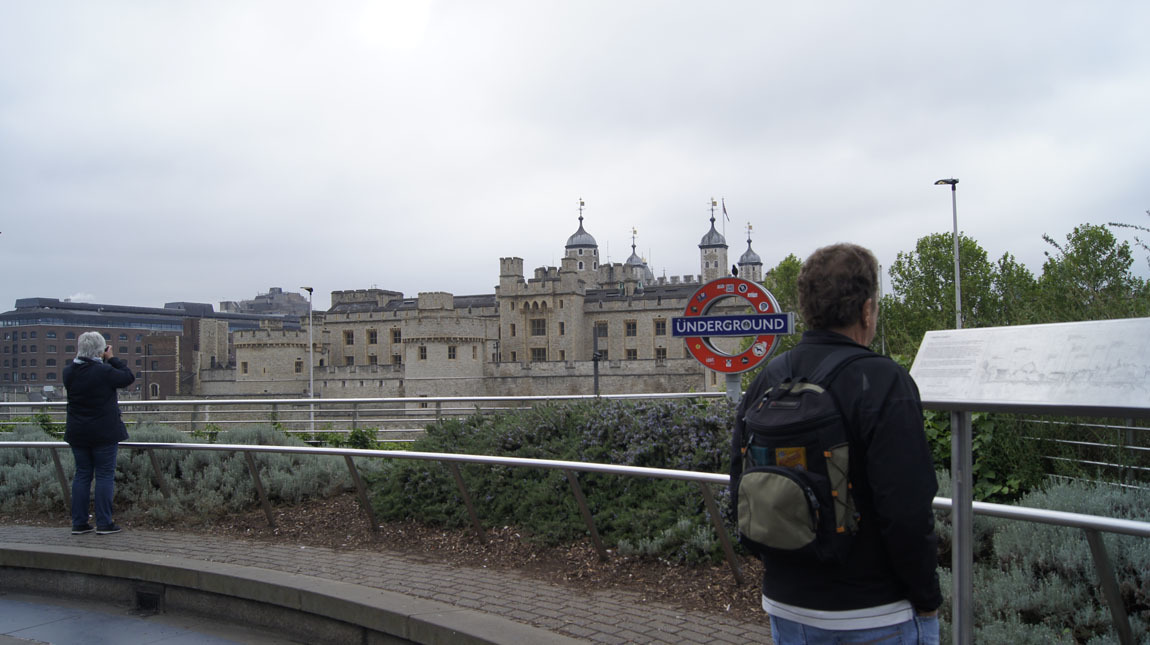
And what is this crazy thing off in the distance?
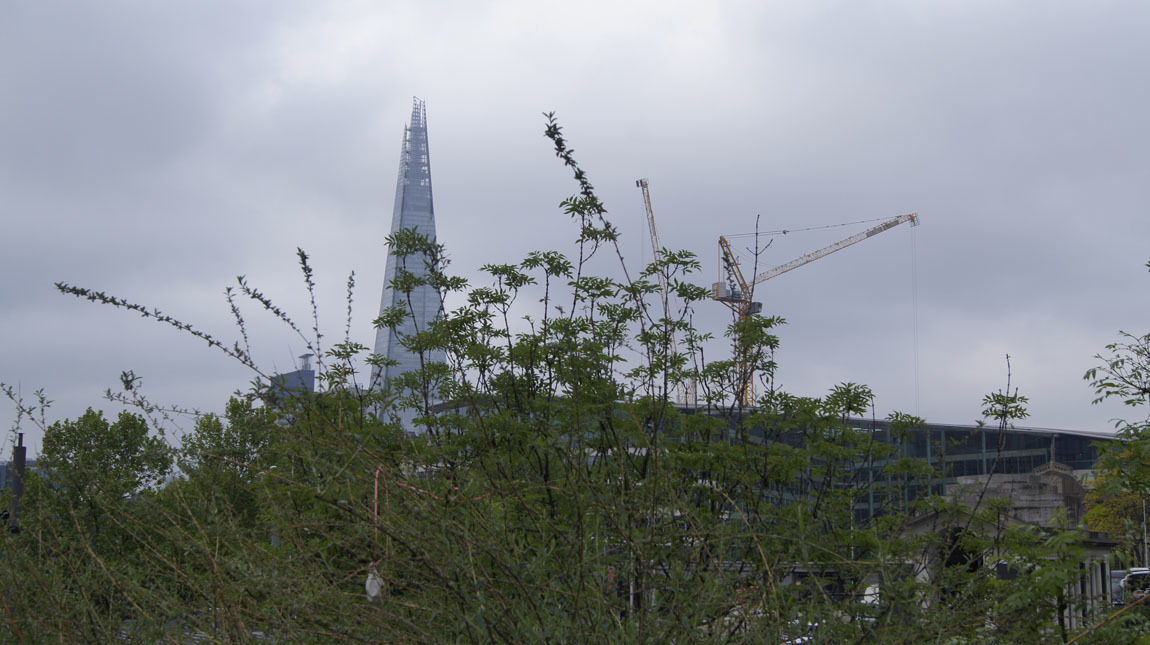
Later, we find out that this is "The Shard". A modern London building. I turn my head and focus back to the building I prefer to look at, the ancient walls and stories of the London Tower. A structure that has stood since about 1097 holds so much more interest for me.
This catapult sits near the entrance to the Tower, where the moat used to be.
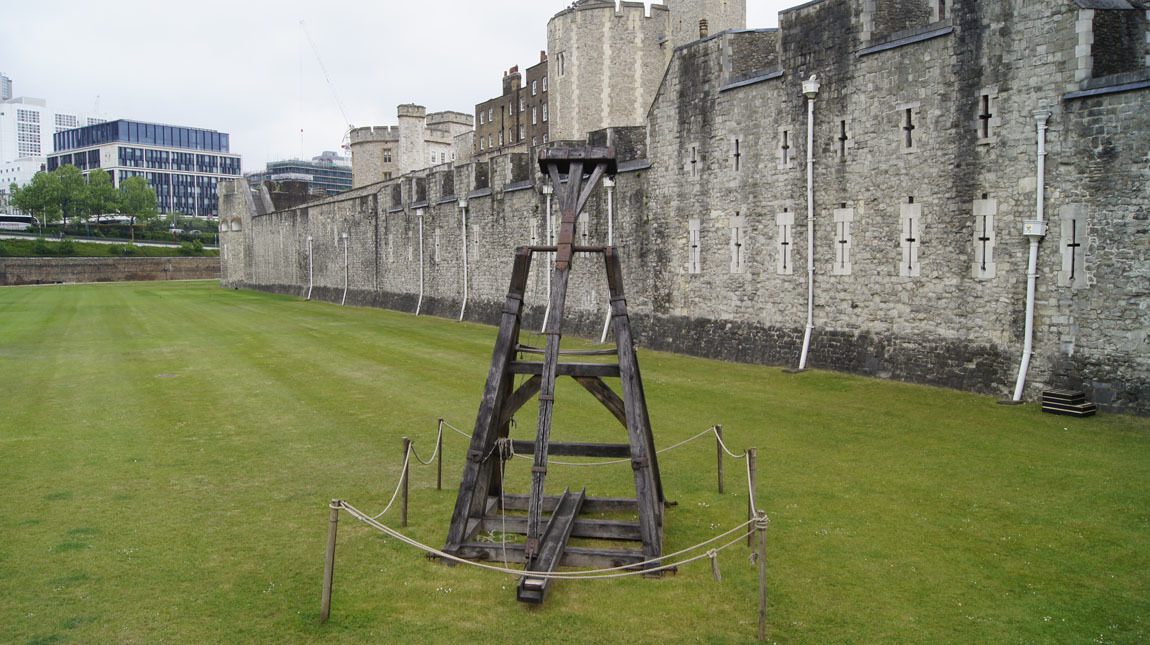
Just past the entrance. Off to the left is the Coins & Kings section, "The story of the Royal Mint at the Tower." Onward and to the right are the tower structures.
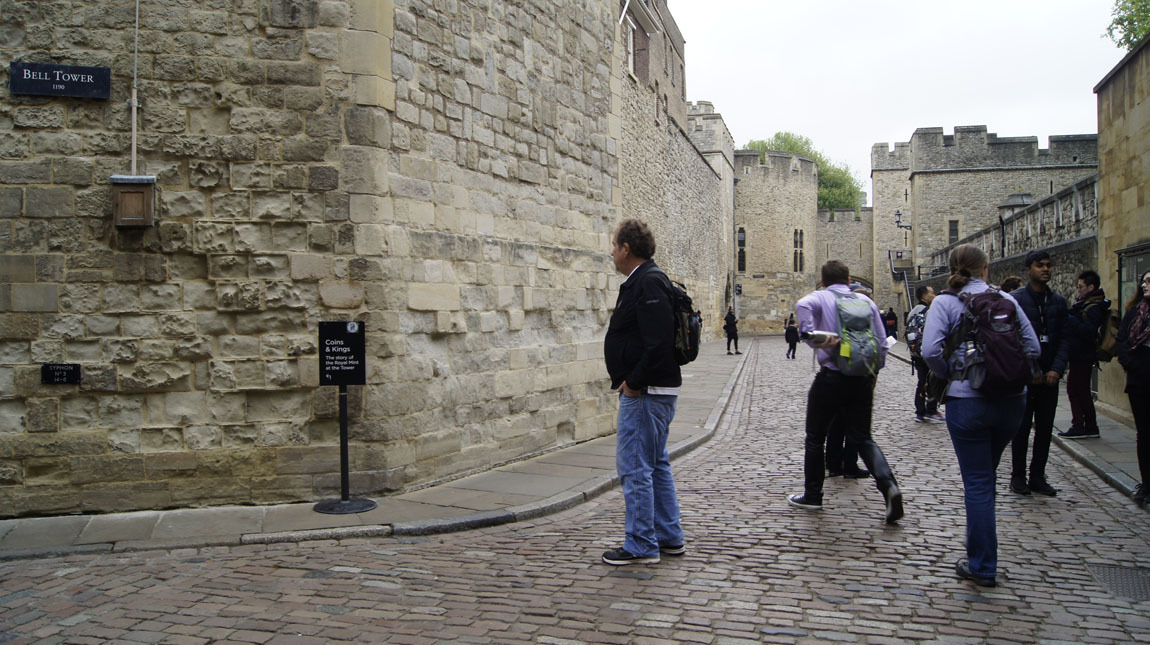
We will go up those stairs for a long walk around the outer wall, but first, we turn left to see the mint. Here is the area in front of the mint:
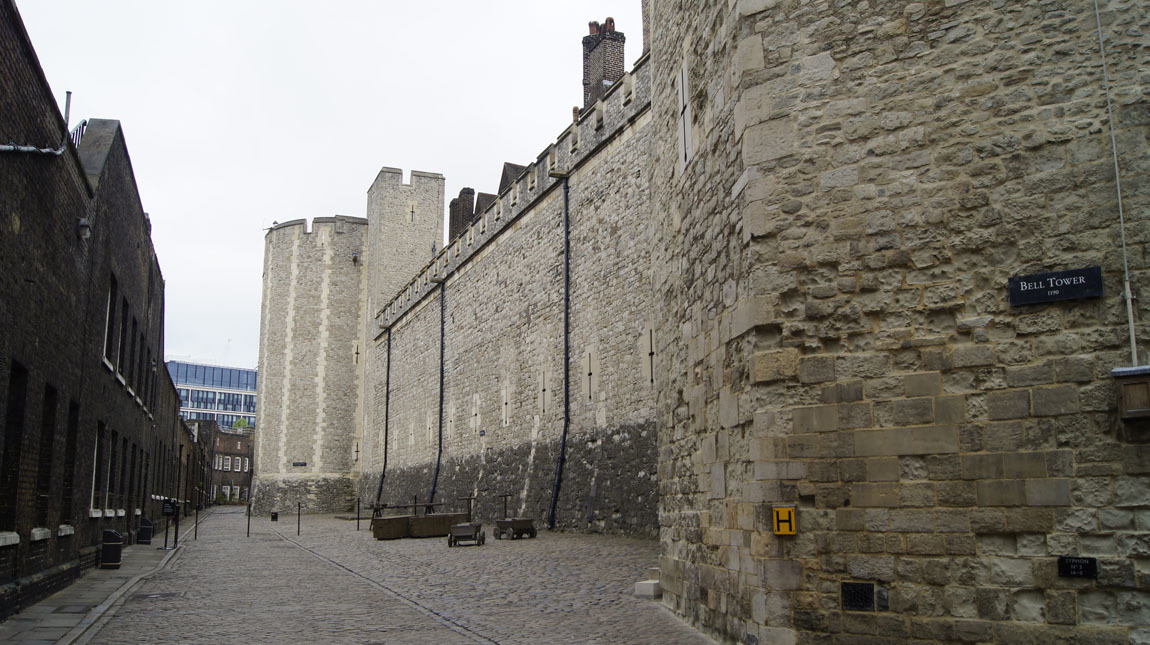
A zoom in of the archer on top of the tower. Note also the crosses in the walls.
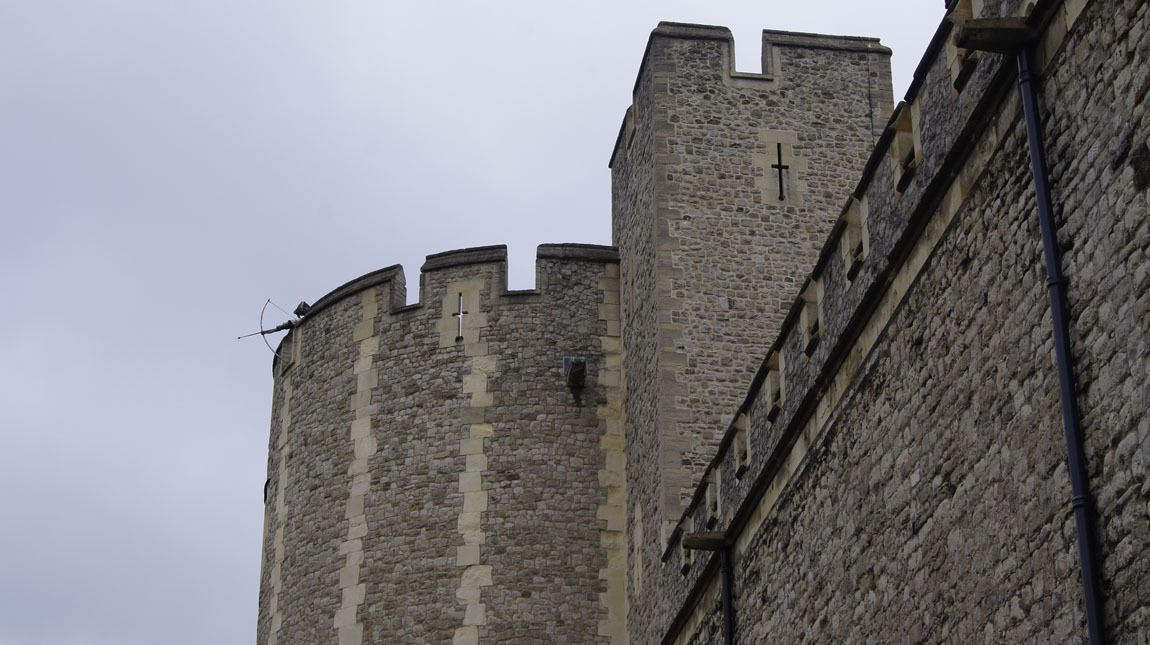
The Mint's many displays illustrated how the kings developed coins over the centuries. Many of the displays were interactive. Some displayed the British dry sense of humor: you'd walk into an alcove and a man's voice started talking about how he was locked up for counterfeiting, pleeing "please help me!".
Leaving the Mint, we walked up the stairs I described earlier. Here is a great view of the Tower Bridge:
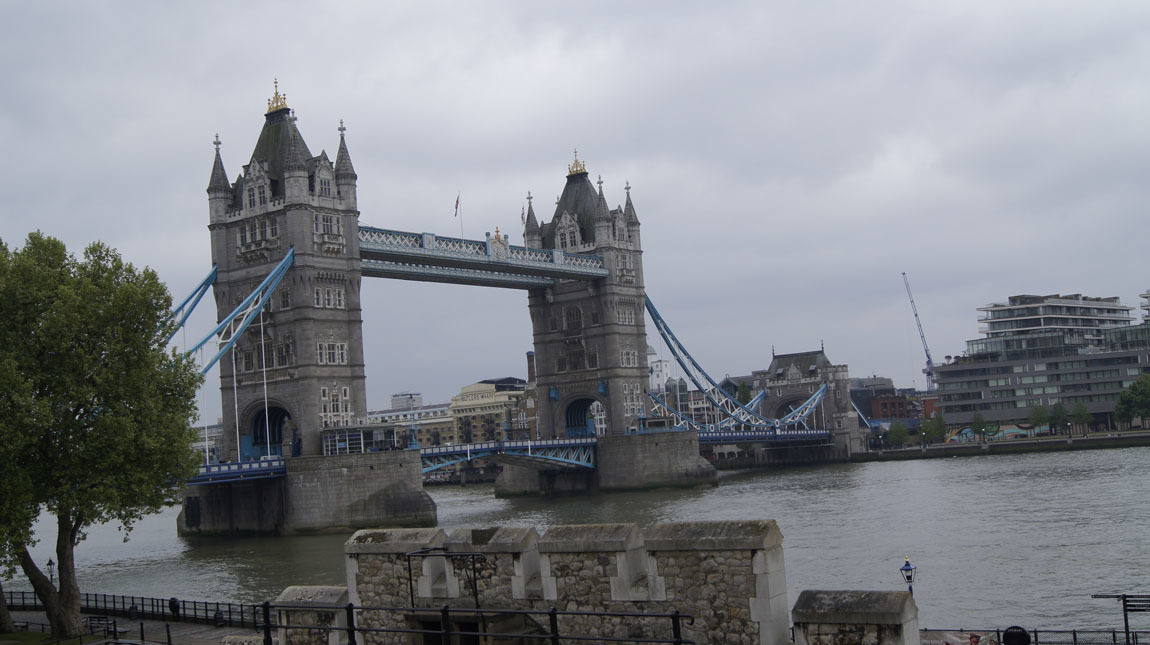
This is a view of The White Tower, built by William the Conqueror more than 900 years ago.
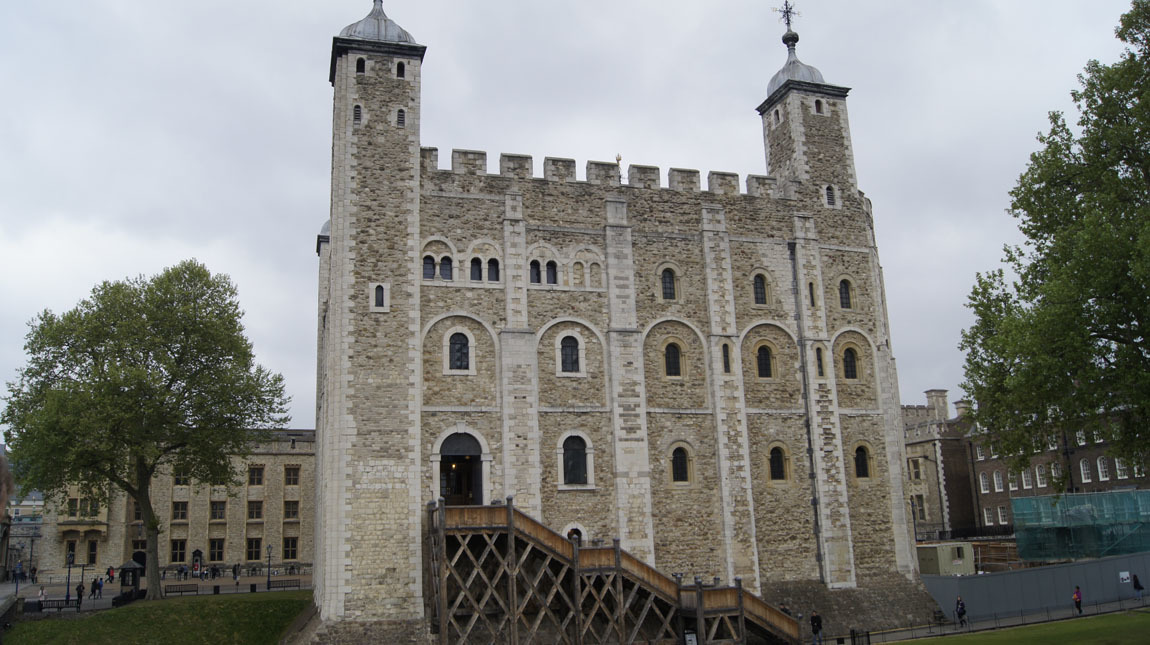
Ravens perch and fly throughout the towers (it's part of the towers tradition). These two were quite tame, posing for me and a group of school kids:
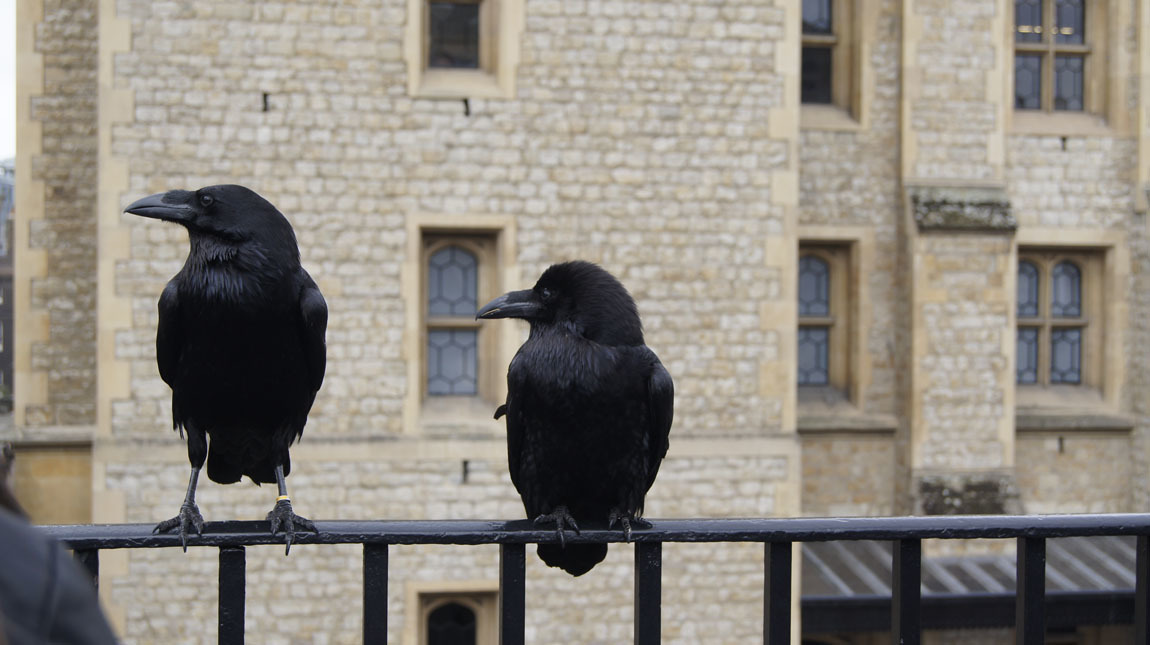
These mesh baboons reside on the walls of the courtyard. We later learn that the royalty kept many exotic animals in the tower. A sign: "Lions were the most important royal beasts at the Tower and were kept here for 600 years. The enclosure where all the animals lived was called the Lion Tower. Kings and queens always wanted to have lions at the Tower. They were epecially proud of any cubs that were born here. British lions have become an important symbol representing pride and power - from the sculptures in Trafalgar Square, to the shirts worn by the England footbal team."
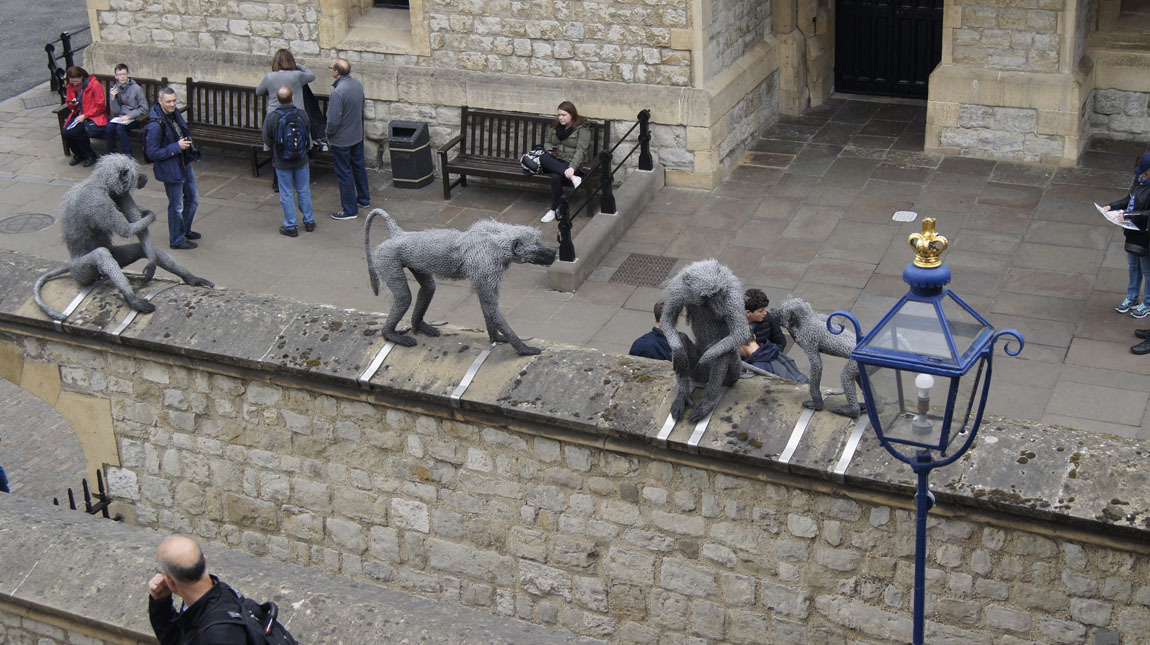
A close-up of one of the towers:
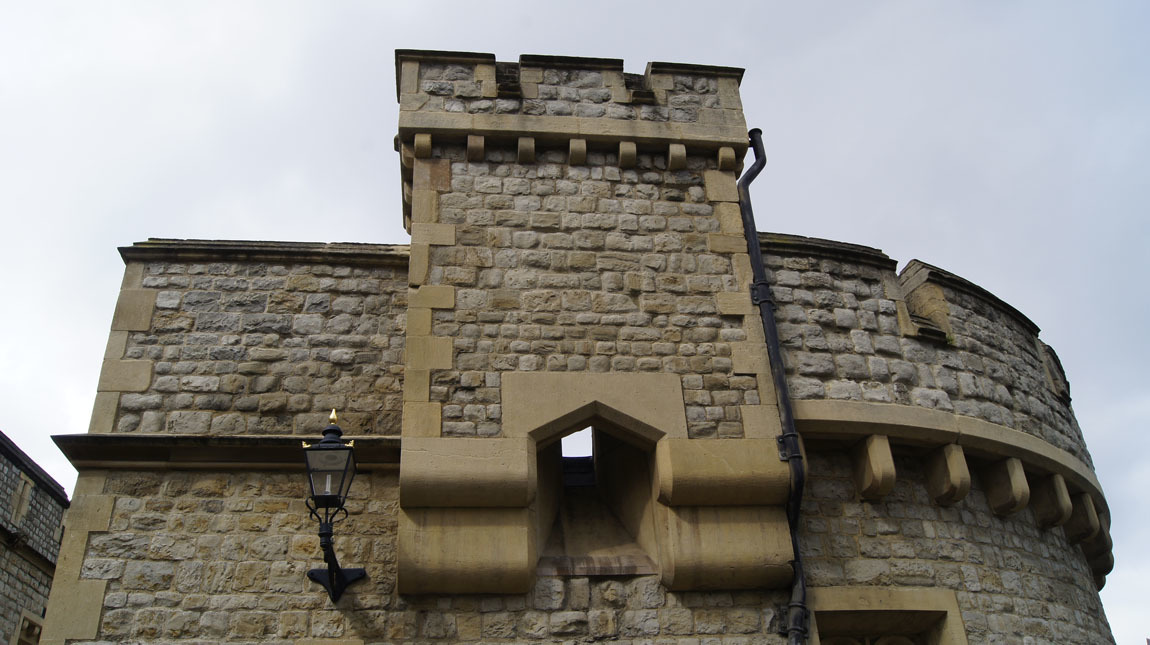
A tour group in the courtyard:
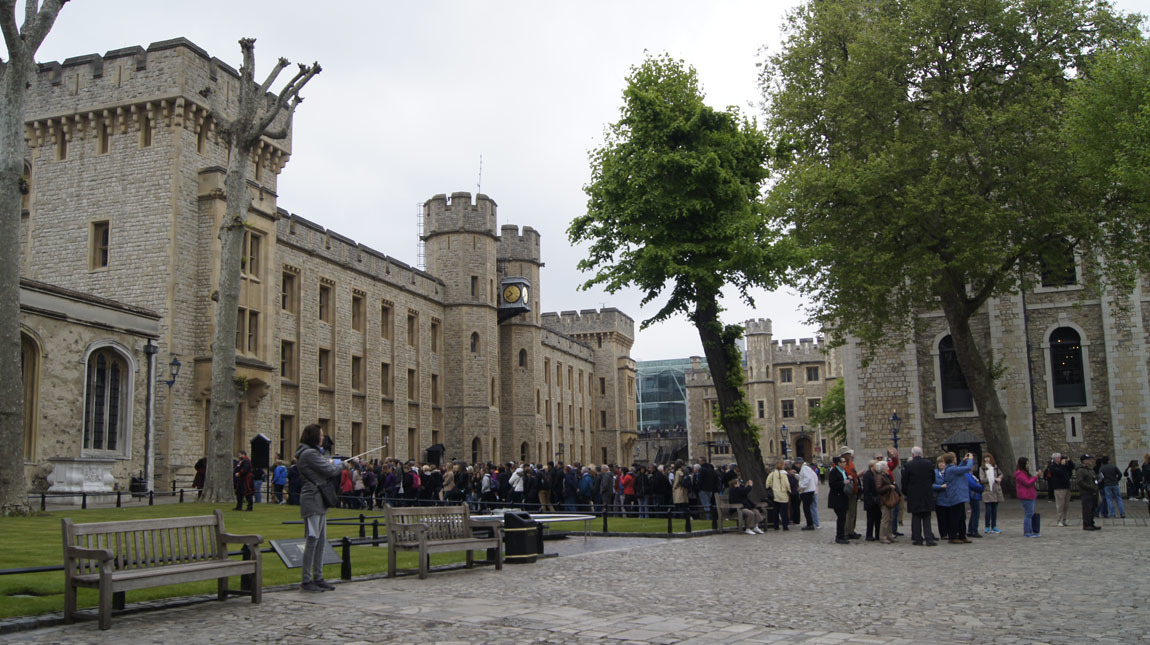
The Crown Jewels is a popular attaction at the London Tower.
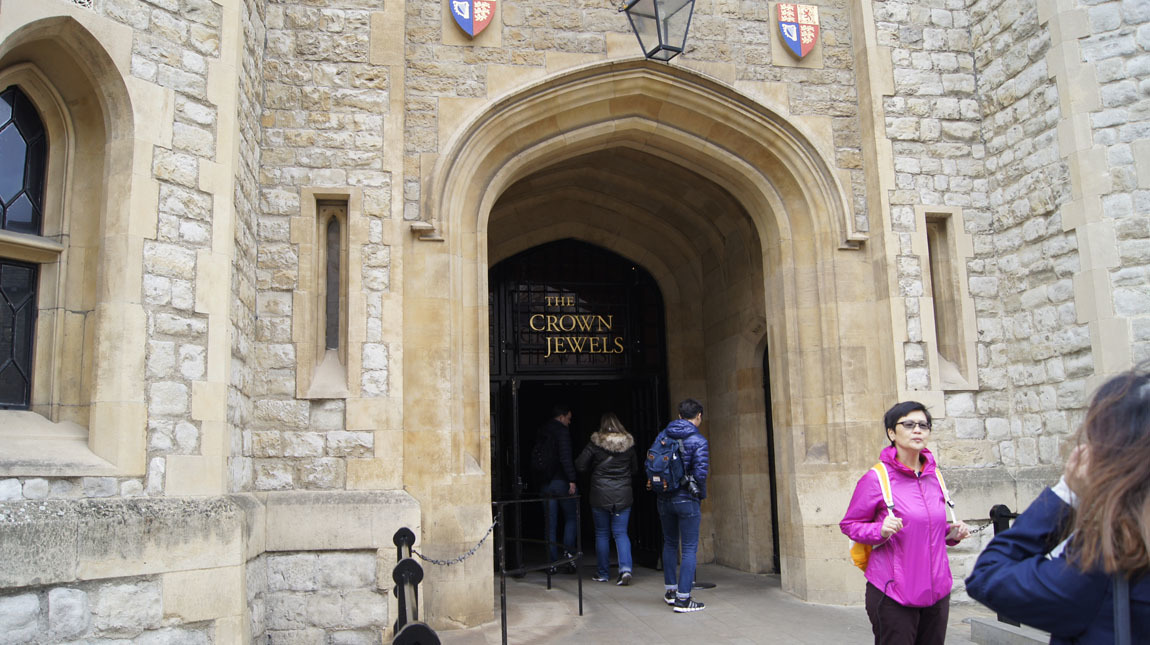
Two guards walk the area beside the entrance:
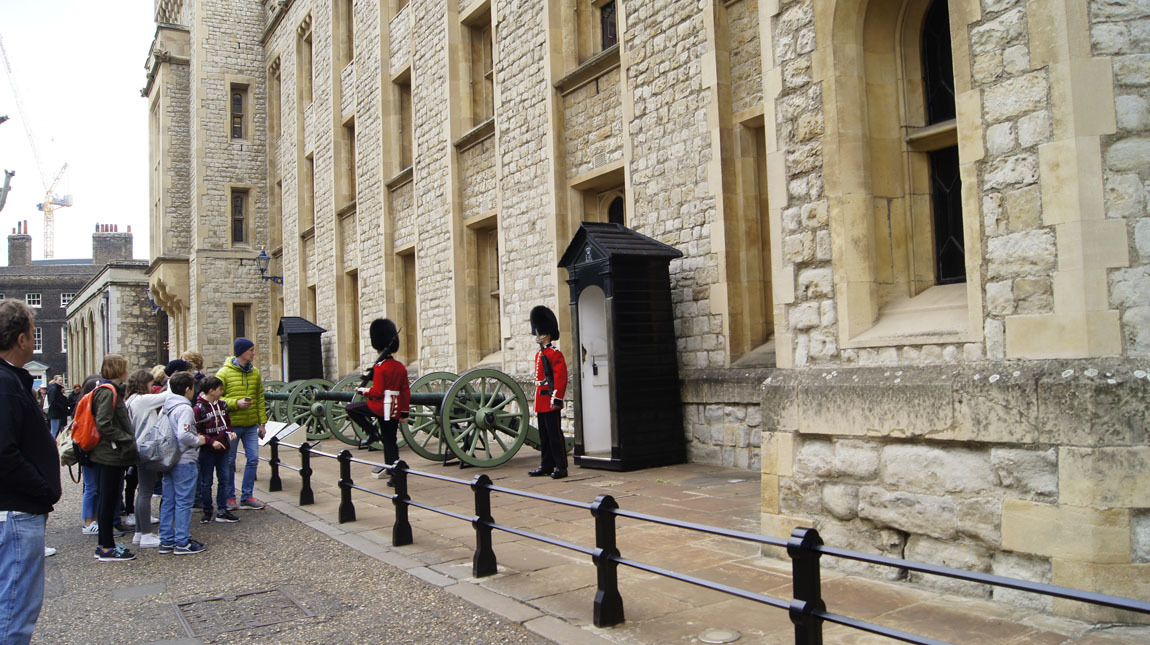
This museum within the Towers hosts the many treasures of the British Royalty. Gaudy gold plates, ceramic dinner ware, serving containers that are simply huge and gaudy, silverware, much more. We were not allowed to take photos. At the end of the tour are the crown jewels, including those of the current queen, Queen Elizabeth II. We had to step on a moving walkway to get past the Crown Jewels, so that no one could linger and stop the flow of people.
Next we walked through the White Tower (see photo above). William the Conqueror began building this "great keep" in the 1070s. From the London Tower, we looked down on the scene below. The wall was bombed during World War II. Wow, this brings history home. I think the cages have something to do with the ravens.
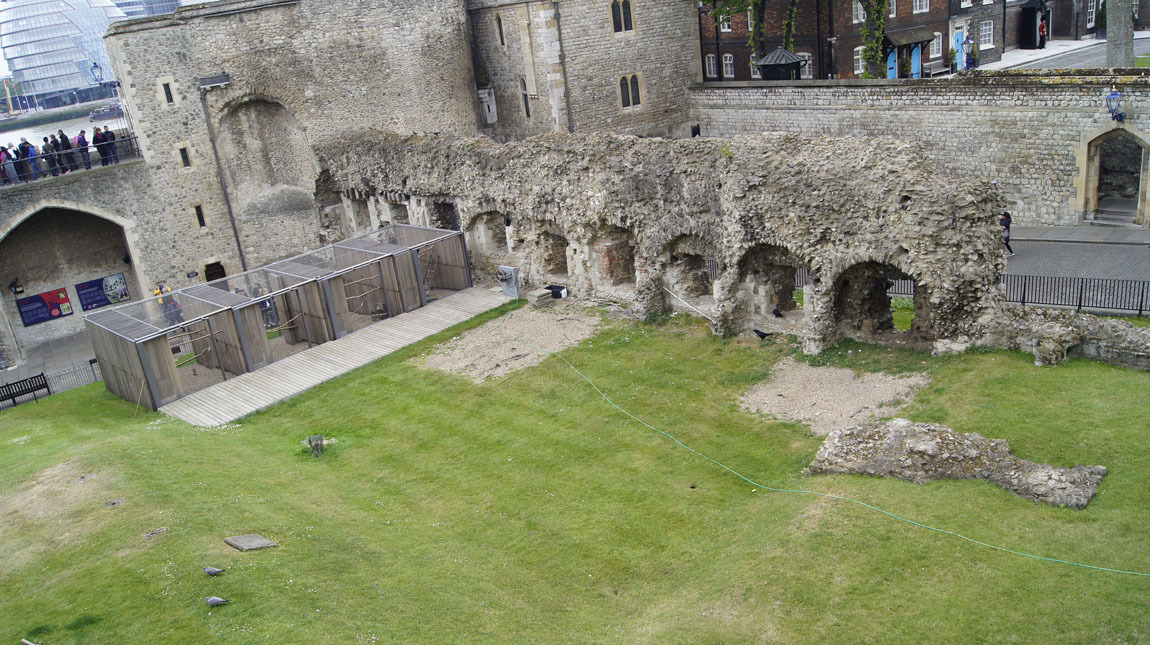
About this time, I (ahem) began thinking of the "call of nature". I asked John, where did they poop and pee? Lo and behold, a couple giggling women were posing for phone-photos in this little room, and when they left I looked in and found:
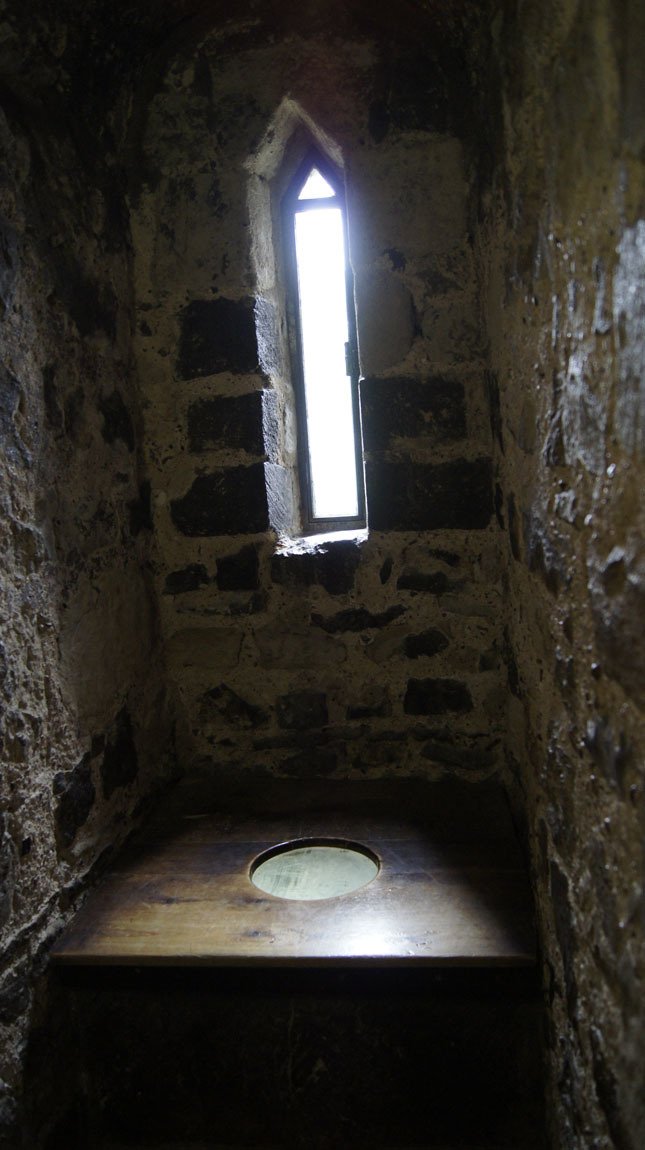
We sat for awhile in this chapel.
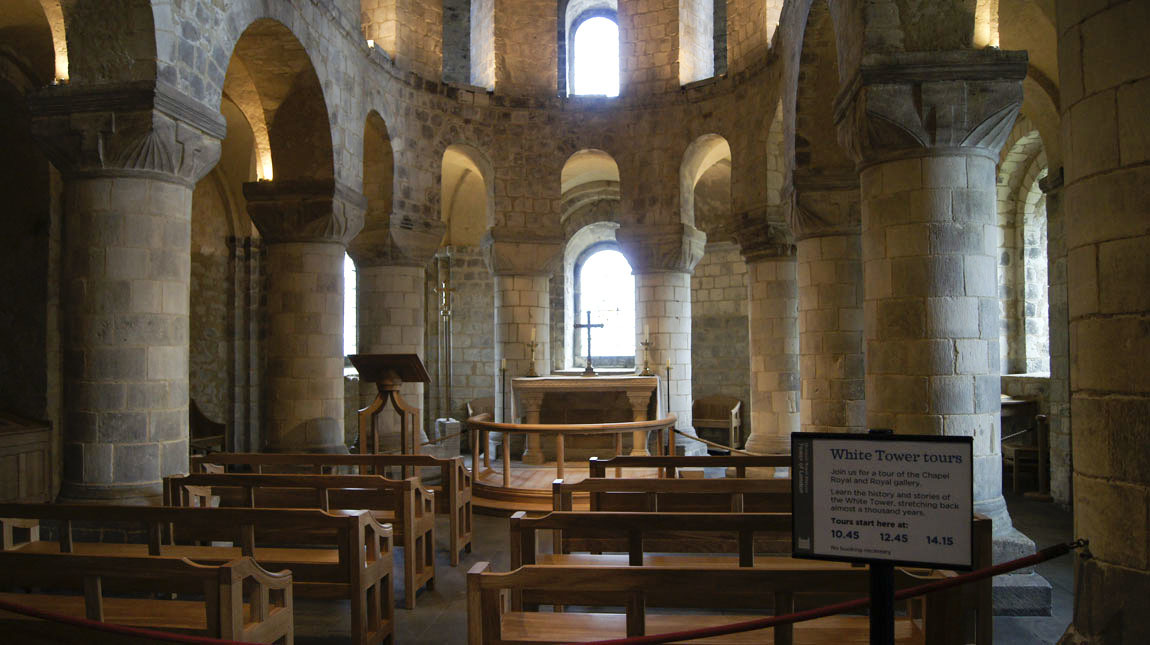
Next we came to the Arsenal. Suits of armor, armored men on wooden horses - amazing how heavy and clumsy but ornate the suits were, and how strong the horses must have been. And then we come to this:
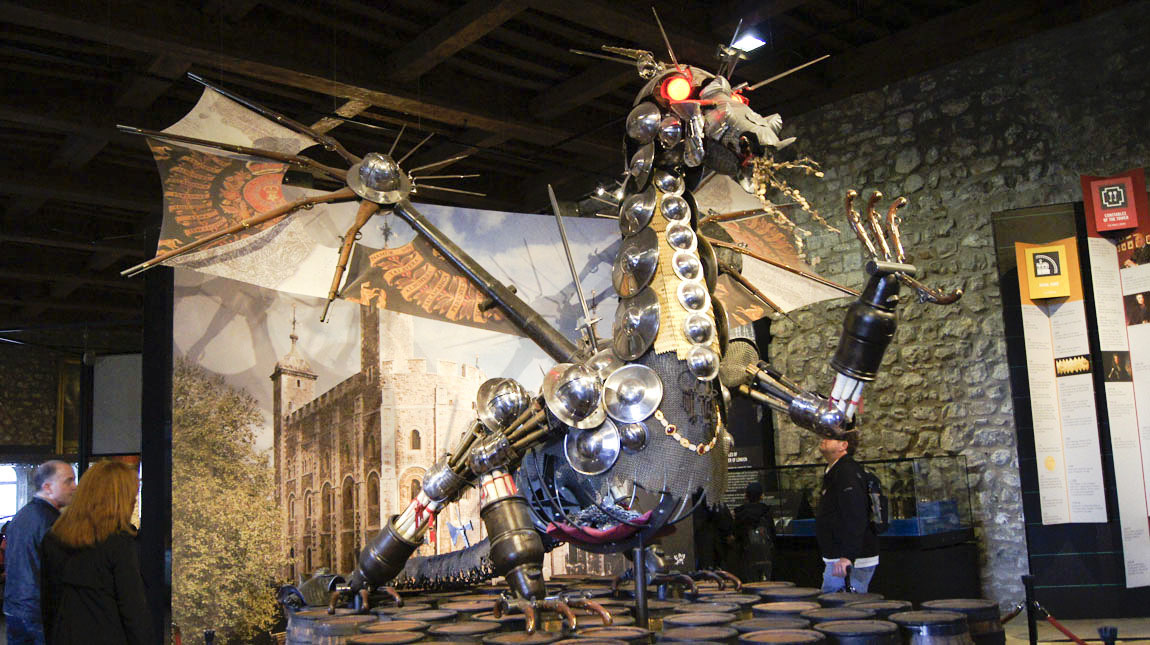
What the heck? We read the signs: "A tradition of displaying British military strength by creating trophies from masses of weapons has long existed at the Tower. Building on the tradition of trophies, this new dragon has been constructed using objects and materials that represent nine institutions which were housed in the Tower - and in some cases still are."
It's mid-day and were are tired (in a good way). It's time to find a place for rest and refreshment. But finding those seemingly simple pleasures in downtown London, amidst just oodles of construction, proved to be a chore. More walking. And on to my next post.
Next London blog entry.
Early risers, these two travellers! By 6:30 am we were at the Holiday Inn breakfast buffet. British sausage (bangers), baked beans, good scrambled eggs, sliced hot ham, yogurt, fruit compote, bread for toast, muffins, fruits like tangerines and apples, US style cereals, Postum, Wheatabix, and last but not least, buttery croissants. And very good coffee.
Time to hit the Tube! Our destination today is the Tower of London. We hit the Tube early, as the Tower opens at 9 am. Mistake! Standing room only on the train, and that's scrunched-like-sardines standing room.
Our first view of the Tower. But how exactly to walk to it? (This is a resounding theme throughout our walks through London.)

And what is this crazy thing off in the distance?

Later, we find out that this is "The Shard". A modern London building. I turn my head and focus back to the building I prefer to look at, the ancient walls and stories of the London Tower. A structure that has stood since about 1097 holds so much more interest for me.
This catapult sits near the entrance to the Tower, where the moat used to be.

Just past the entrance. Off to the left is the Coins & Kings section, "The story of the Royal Mint at the Tower." Onward and to the right are the tower structures.

We will go up those stairs for a long walk around the outer wall, but first, we turn left to see the mint. Here is the area in front of the mint:

A zoom in of the archer on top of the tower. Note also the crosses in the walls.

The Mint's many displays illustrated how the kings developed coins over the centuries. Many of the displays were interactive. Some displayed the British dry sense of humor: you'd walk into an alcove and a man's voice started talking about how he was locked up for counterfeiting, pleeing "please help me!".
Leaving the Mint, we walked up the stairs I described earlier. Here is a great view of the Tower Bridge:

This is a view of The White Tower, built by William the Conqueror more than 900 years ago.

Ravens perch and fly throughout the towers (it's part of the towers tradition). These two were quite tame, posing for me and a group of school kids:

These mesh baboons reside on the walls of the courtyard. We later learn that the royalty kept many exotic animals in the tower. A sign: "Lions were the most important royal beasts at the Tower and were kept here for 600 years. The enclosure where all the animals lived was called the Lion Tower. Kings and queens always wanted to have lions at the Tower. They were epecially proud of any cubs that were born here. British lions have become an important symbol representing pride and power - from the sculptures in Trafalgar Square, to the shirts worn by the England footbal team."

A close-up of one of the towers:

A tour group in the courtyard:

The Crown Jewels is a popular attaction at the London Tower.

Two guards walk the area beside the entrance:

This museum within the Towers hosts the many treasures of the British Royalty. Gaudy gold plates, ceramic dinner ware, serving containers that are simply huge and gaudy, silverware, much more. We were not allowed to take photos. At the end of the tour are the crown jewels, including those of the current queen, Queen Elizabeth II. We had to step on a moving walkway to get past the Crown Jewels, so that no one could linger and stop the flow of people.
Next we walked through the White Tower (see photo above). William the Conqueror began building this "great keep" in the 1070s. From the London Tower, we looked down on the scene below. The wall was bombed during World War II. Wow, this brings history home. I think the cages have something to do with the ravens.

About this time, I (ahem) began thinking of the "call of nature". I asked John, where did they poop and pee? Lo and behold, a couple giggling women were posing for phone-photos in this little room, and when they left I looked in and found:

We sat for awhile in this chapel.

Next we came to the Arsenal. Suits of armor, armored men on wooden horses - amazing how heavy and clumsy but ornate the suits were, and how strong the horses must have been. And then we come to this:

What the heck? We read the signs: "A tradition of displaying British military strength by creating trophies from masses of weapons has long existed at the Tower. Building on the tradition of trophies, this new dragon has been constructed using objects and materials that represent nine institutions which were housed in the Tower - and in some cases still are."
It's mid-day and were are tired (in a good way). It's time to find a place for rest and refreshment. But finding those seemingly simple pleasures in downtown London, amidst just oodles of construction, proved to be a chore. More walking. And on to my next post.
Next London blog entry.
Comments
No comments yet
Add Comment